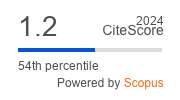Mednarodno sodelovanje podjetij za izboljšanje lokalnih javnih storitev
DOI:
https://doi.org/10.4335/15.4.869-887(2017)Ključne besede:
javne storitve, upravljanje, sklepanje pogodb, poslovni sporazumi, mednarodnoPovzetek
Spremembe v politikah lokalnih ravni upravljanja glede upravljanja javnih storitev so v središču pozornosti mnogih raziskav po vsem svetu. Vendar pa še ni bilo raziskano, kako se nekateri novi modeli zanašajo na mednarodne zveze podjetij z namenom izboljšanja opravljenih javnih storitev. Za obravnavo tega vprašanja je bila izvedena kvalitativna analiza na podlagi študij primerov združenj kolumbijskih in španskih podjetij. Rezultati kažejo, da spremembe v lokalnih politikah niso le izboljšale javnih storitev, temveč se je s sklenjenimi sporazumi doseglo močno in agilno partnerstvo.
Literatura
Bakker, K. (2008). The ambiguity of community: Debating alternatives to private sector provision of urban water supply, Water alternatives, 1(2), pp. 236-252.
Bel, G., & Fageda, X. (2009) Factors explaining local privatization: a meta-regression analysis, Public Choice, 139(1), pp. 105-119.
Bianchi, C. (2009) Retail internationalisation from emerging markets: case study evidence from Chile, International Marketing Review, 26(2), pp. 221-243.
Buchanan, J. M., & Tullock, G. (1962) The calculus of consent (Vol. 3) (Ann Arbor: University of Michigan Press).
Coase, R. H. (1937) The nature of the firm, Economica, 4(16), pp. 386-405.
Domberger, S., & Jensen, P. (1997) Contracting out by the public sector: theory, evidence, prospects, Oxford Review of Economic Policy, 13(4), pp. 67-78.
Eisenhardt, K. M., & Graebner, M. E. (2007) Theory building from cases: Opportunities and challenges, Academy of Management Journal, 50(1), pp. 25-32.
Fernández, S. E. (1991) Una tipología de la cooperación empresarial. Esic Market, 74, pp. 101-114.
Ferris, J. M. (1986) The Decision to Contract out An Empirical Analysis, Urban Affairs Review, 22(2), pp. 289-311.
Foster, V. (2002). Ten years of water service reform in Latin America. Reinventing Water and Wastewater Systems: Global Lessons for Improving Water Management (Washington: the World Bank).
Gomes, E., Cohen, M., & Mellahi, K. (2011) When two African cultures collide: A study of interactions between managers in a strategic alliance between two African organizations, Journal of World Business, 46(1), pp. 5-12.
González-Gómez, F., & García-Rubio, M. A. (2008). Efficiency in the management of urban water services. What have we learned after four decades of research, Hacienda Pública Española/Revista de Economía Pública, 185(2), pp. 39-67.
González‐Gómez, F., Picazo‐Tadeo, A. J., & Guardiola, J. (2011) Why do local governments privatize the provision of water services? Empirical evidence from Spain; Public Administration, 89(2), pp. 471-492.
Grossman, S. J., & Hart, O. D. (1986) The costs and benefits of ownership: A theory of vertical and lateral integration, Journal of Political Economy, 94(4), pp. 691-719.
Gulati, R. (2007). Managing network resources: Alliances, affiliations, and other relational assets (Oxford University Press on Demand).
Gummesson, E. (2005) Qualitative research in marketing: Road-map for a wilderness of complexity and unpredictability, European Journal of Marketing, 39(3/4), pp. 309-327.
Hart, O., & Moore, J. (1990) Property Rights and the Nature of the Firm, Journal of Political Economy, 98(6), pp. 1119-1158.
Hyder, A. S., & Abraha, D. (2008) Institutional factors and strategic alliances in eastern and central Europe. Baltic Journal of Management, 3(3), 289-308.
Jaouen, A., & Gundolf, K. (2009) Strategic alliances between microfirms: Specific patterns in the French context, International Journal of Entrepreneurial Behavior & Research, 15(1), pp. 48-70.
Jensen, M. C., & Meckling, W. H. (1976) Theory of the firm: Managerial behavior, agency costs and ownership structure. Journal of Financial Economics, 3(4), pp. 305-360.
Mascarenhas, R. C. (1993) Building an enterprise culture in the public sector: Reform of the public sector in Australia, Britain, and New Zealand, Public Administration Review, 53(4), pp. 319-328.
Oh, Y., & Park, J. (2017) The Impact of Different Public Contracting Management Models on the Inputs and Outcomes of Local Public Services, Lex localis-Journal of Local Self-Government, 15(1), pp. 19-41.
Piekkari, R., & Welch, C. (2006) Reflections on using qualitative research methods in international business, Liiketaloudellinen Aikakauskirja, 55(4), pp. 565-574.
Rangan, U. S., & Yoshino, M. Y. (1996) Forging alliances: A guide to top management. The Columbia Journal of World Business, 31(3), pp. 6-13.
Schaeffer, P. V., & Loveridge, S. (2002) Toward an understanding of types of public-private cooperation. Public Performance & Management Review, 26(2), pp. 169-189.
Solesvik, M. Z. & Westhead, P. (2010) Partner selection for strategic alliances: case study insights from the maritime industry. Industrial Management & Data Systems, 110(6), pp. 841-860.
Walls, M., Macauley, M., & Anderson, S. (2005) Private markets, contracts, and government provision what explains the organization of local waste and recycling markets?. Urban Affairs Review, 40(5), pp. 590-613.
Yin, R. K. (2013) Case study research: Design and methods (Thousand Oaks: Sage publications).
Bel, G., & Fageda, X. (2009) Factors explaining local privatization: a meta-regression analysis, Public Choice, 139(1), pp. 105-119.
Bianchi, C. (2009) Retail internationalisation from emerging markets: case study evidence from Chile, International Marketing Review, 26(2), pp. 221-243.
Buchanan, J. M., & Tullock, G. (1962) The calculus of consent (Vol. 3) (Ann Arbor: University of Michigan Press).
Coase, R. H. (1937) The nature of the firm, Economica, 4(16), pp. 386-405.
Domberger, S., & Jensen, P. (1997) Contracting out by the public sector: theory, evidence, prospects, Oxford Review of Economic Policy, 13(4), pp. 67-78.
Eisenhardt, K. M., & Graebner, M. E. (2007) Theory building from cases: Opportunities and challenges, Academy of Management Journal, 50(1), pp. 25-32.
Fernández, S. E. (1991) Una tipología de la cooperación empresarial. Esic Market, 74, pp. 101-114.
Ferris, J. M. (1986) The Decision to Contract out An Empirical Analysis, Urban Affairs Review, 22(2), pp. 289-311.
Foster, V. (2002). Ten years of water service reform in Latin America. Reinventing Water and Wastewater Systems: Global Lessons for Improving Water Management (Washington: the World Bank).
Gomes, E., Cohen, M., & Mellahi, K. (2011) When two African cultures collide: A study of interactions between managers in a strategic alliance between two African organizations, Journal of World Business, 46(1), pp. 5-12.
González-Gómez, F., & García-Rubio, M. A. (2008). Efficiency in the management of urban water services. What have we learned after four decades of research, Hacienda Pública Española/Revista de Economía Pública, 185(2), pp. 39-67.
González‐Gómez, F., Picazo‐Tadeo, A. J., & Guardiola, J. (2011) Why do local governments privatize the provision of water services? Empirical evidence from Spain; Public Administration, 89(2), pp. 471-492.
Grossman, S. J., & Hart, O. D. (1986) The costs and benefits of ownership: A theory of vertical and lateral integration, Journal of Political Economy, 94(4), pp. 691-719.
Gulati, R. (2007). Managing network resources: Alliances, affiliations, and other relational assets (Oxford University Press on Demand).
Gummesson, E. (2005) Qualitative research in marketing: Road-map for a wilderness of complexity and unpredictability, European Journal of Marketing, 39(3/4), pp. 309-327.
Hart, O., & Moore, J. (1990) Property Rights and the Nature of the Firm, Journal of Political Economy, 98(6), pp. 1119-1158.
Hyder, A. S., & Abraha, D. (2008) Institutional factors and strategic alliances in eastern and central Europe. Baltic Journal of Management, 3(3), 289-308.
Jaouen, A., & Gundolf, K. (2009) Strategic alliances between microfirms: Specific patterns in the French context, International Journal of Entrepreneurial Behavior & Research, 15(1), pp. 48-70.
Jensen, M. C., & Meckling, W. H. (1976) Theory of the firm: Managerial behavior, agency costs and ownership structure. Journal of Financial Economics, 3(4), pp. 305-360.
Mascarenhas, R. C. (1993) Building an enterprise culture in the public sector: Reform of the public sector in Australia, Britain, and New Zealand, Public Administration Review, 53(4), pp. 319-328.
Oh, Y., & Park, J. (2017) The Impact of Different Public Contracting Management Models on the Inputs and Outcomes of Local Public Services, Lex localis-Journal of Local Self-Government, 15(1), pp. 19-41.
Piekkari, R., & Welch, C. (2006) Reflections on using qualitative research methods in international business, Liiketaloudellinen Aikakauskirja, 55(4), pp. 565-574.
Rangan, U. S., & Yoshino, M. Y. (1996) Forging alliances: A guide to top management. The Columbia Journal of World Business, 31(3), pp. 6-13.
Schaeffer, P. V., & Loveridge, S. (2002) Toward an understanding of types of public-private cooperation. Public Performance & Management Review, 26(2), pp. 169-189.
Solesvik, M. Z. & Westhead, P. (2010) Partner selection for strategic alliances: case study insights from the maritime industry. Industrial Management & Data Systems, 110(6), pp. 841-860.
Walls, M., Macauley, M., & Anderson, S. (2005) Private markets, contracts, and government provision what explains the organization of local waste and recycling markets?. Urban Affairs Review, 40(5), pp. 590-613.
Yin, R. K. (2013) Case study research: Design and methods (Thousand Oaks: Sage publications).
Objavljeno
2017-10-25
Številka
Rubrika
Article
Kako citirati
Mednarodno sodelovanje podjetij za izboljšanje lokalnih javnih storitev. (2017). Lex Localis - Journal of Local Self-Government, 15(4), 869-887. https://doi.org/10.4335/15.4.869-887(2017)








